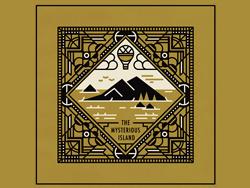Introduction to the flavor and taste characteristics of the aroma-rich coffee from Los Congo Manor in Nicaragua.
Nicaragua is located in central Central America, in view of the special strategic geography of the country.
As early as the early 19th century, when the gold rush in the western United States was high, many scholars put forward the idea of digging the Nicaraguan Canal.
In the 1820s, someone put forward the idea of digging a canal connecting the Atlantic and Pacific oceans, that is, from the San Juan River to Lake Nicaragua, and then to the Rivas isthmus.
In 1833, the Nepalese government formally put it into discussion.
In 1884, the United States formally signed a letter of political intent with Nepal on the canal excavation plan, but finally chose to give up because of the hidden volcanic dangers in Nepal. Nicaragua once issued a stamp with a picture of the eruption of the famous Momotombo volcano. Varia, director of the French Canal Company, sent the stamps to senators of the United States Congress respectively, with Varia's handwritten postscript on the back: "official testimony to volcanic activities in Nicaragua." So when the United States senators saw the stamp, they vetoed the Nicaraguan route.
In 1914, the Panama Canal was opened to traffic, and the plan to build the Nicaraguan Canal was shelved.
In the 1990s, the Nepal Canal project was put forward again, and many large construction groups in the United States, Japan and Europe were eager to try, but due to the lack of domestic finance, the country's "century-old dream" was blocked many times.
Acquisition of Xinwei
In 2009, the plan to build the Nicaraguan canal enabled Wang Jing to buy a 40% stake in Xinwei from Xinwei's state-owned parent company, Datang Telecom, enough to cover operating costs.
The Russian side intervened
In 2011, Nicaraguan President Daniel Ortega arrived in Moscow for a visit to Russia.
Daniel Ortega
Daniel Ortega
This is the summit-level meeting between the two countries over the past 20 years. The two countries have signed an agreement on the joint construction of the Nicaragua Canal. The Nicaragua Canal project, totaling US $20 billion, is expected to take 12 years.
Nicaragua Nicaragua 2005 CoE (Cup of Excellence) competition winning coffee beans, that is, the competition winning coffee beans, the output is very small, relatively rare. The appearance is very neat, basically do not need to pick, it is recommended to bake around the middle of the bean, cinnamon roast cinnamon baking degree.
Nicaragua of Nicaragua is known as "the country of volcanic lakes" because of its many lakes and volcanoes. The volcanic soil rich in minerals produces high-quality coffee beans. The most famous coffee produced by volcanic ash soil is Kona kona, Hawaii.
The Cup of Excellence is the most esteemed award given out for specialty coffees. These awards come from a strict competition that selects the very best... The Cup of Excellence competition is selected by the Coffee Competition, an American non-profit organization. Such competitions will last for dozens of days, and only a very small number of coffee beans have been selected as the highest honor after being severely evaluated by coffee judges and world-class professional cup testers. The organizers then auctioned the coffee beans to bidders all over the world, and the competition was often fierce. The coffee producing areas of Niagua can be said to have a unique geographical environment, with some areas having more than four months of dry season and full sun exposure. In the producing area of Dipido, Nueva Segovia is located in a high-altitude mountain area of 1100 meters, clean and beautiful rivers provide enough water, many shade tree species, fertile soil and excellent climate. The coffee beans in this producing area organized to judge the top five top coffee international organizations CoE (Cup of Excellence) in 2006 and 2007. Nicaraguan coffee with high quality ranks first in the world coffee beans and enjoys a good reputation. Its particles are moderate in size, mild in taste and very aromatic and mellow.
Nicaragua is located in central Central America, bordered by the Pacific Ocean to the west and the Caribbean Sea to the east. The highlands in the north and the coastal plains in the east are part of the Central American volcanic belt. The eastern plain is high-temperature and rainy, with a tropical maritime climate. The suitable climate provides an excellent growth environment for the cultivation of coffee.
High-quality Nicaraguan coffee, grown in the north and middle of the country. Coffee is a pillar industry in Nicaragua, producing nearly 100,000 tons of coffee beans every year. Many people who have tasted Nicaraguan coffee usually think that it is no different from Salvadoran coffee or Honduran coffee. It has a rich aroma, smooth and delicate, and a slightly bitter finish, like a faint taste in wine.

Important Notice :
前街咖啡 FrontStreet Coffee has moved to new addredd:
FrontStreet Coffee Address: 315,Donghua East Road,GuangZhou
Tel:020 38364473
- Prev

Introduction to boutique coffee with rich aroma and taste characteristics of coffee in Joy Manor, Nicaragua.
Nicaragua is one of the major gold-producing countries in Latin America. It has been proved to have 106 gold veins, with an annual output of 70,000 ounces, ranking 13th in the world. Other minerals include silver, antimony, zinc, copper, lead and so on. Rich in geothermal resources. There are two oil deposits. Forests account for 43% of the country's area, exporting pine and mahogany. Fish and shrimp are rich in aquatic products. [1] Administrative division editors divide the whole country of Nicaragua
- Next

Introduction to the flavor and taste of Salvadoran coffee in Mercedes Manor
The diet of Salvadorans is developed on the basis of Spanish and Indian cooking. Urban residents mainly eat western food, the staple food is rice, beans, corn, milk, fruit, etc., popular urban and rural drinks are cola, beer, coffee and so on. Religion more than 90% of Salvadoran residents are Catholic, a branch of Christianity that takes the Vatican as its own
Related
- Does Rose Summer choose Blue, Green or Red? Detailed explanation of Rose Summer Coffee plots and Classification in Panamanian Jade Manor
- What is the difference between the origin, producing area, processing plant, cooperative and manor of coffee beans?
- How fine does the espresso powder fit? how to grind the espresso?
- Sca coffee roasting degree color card coffee roasting degree 8 roasting color values what do you mean?
- The practice of lattes: how to make lattes at home
- Introduction to Indonesian Fine Coffee beans-- Java Coffee producing area of Indonesian Arabica Coffee
- How much will the flavor of light and medium roasted rose summer be expressed? What baking level is rose summer suitable for?
- Introduction to the characteristics of washing, sun-drying or wet-planing coffee commonly used in Mantenin, Indonesia
- Price characteristics of Arabica Coffee Bean Starbucks introduction to Manning Coffee Bean Taste producing area Variety Manor
- What is the authentic Yega flavor? What are the flavor characteristics of the really excellent Yejasuffi coffee beans?

